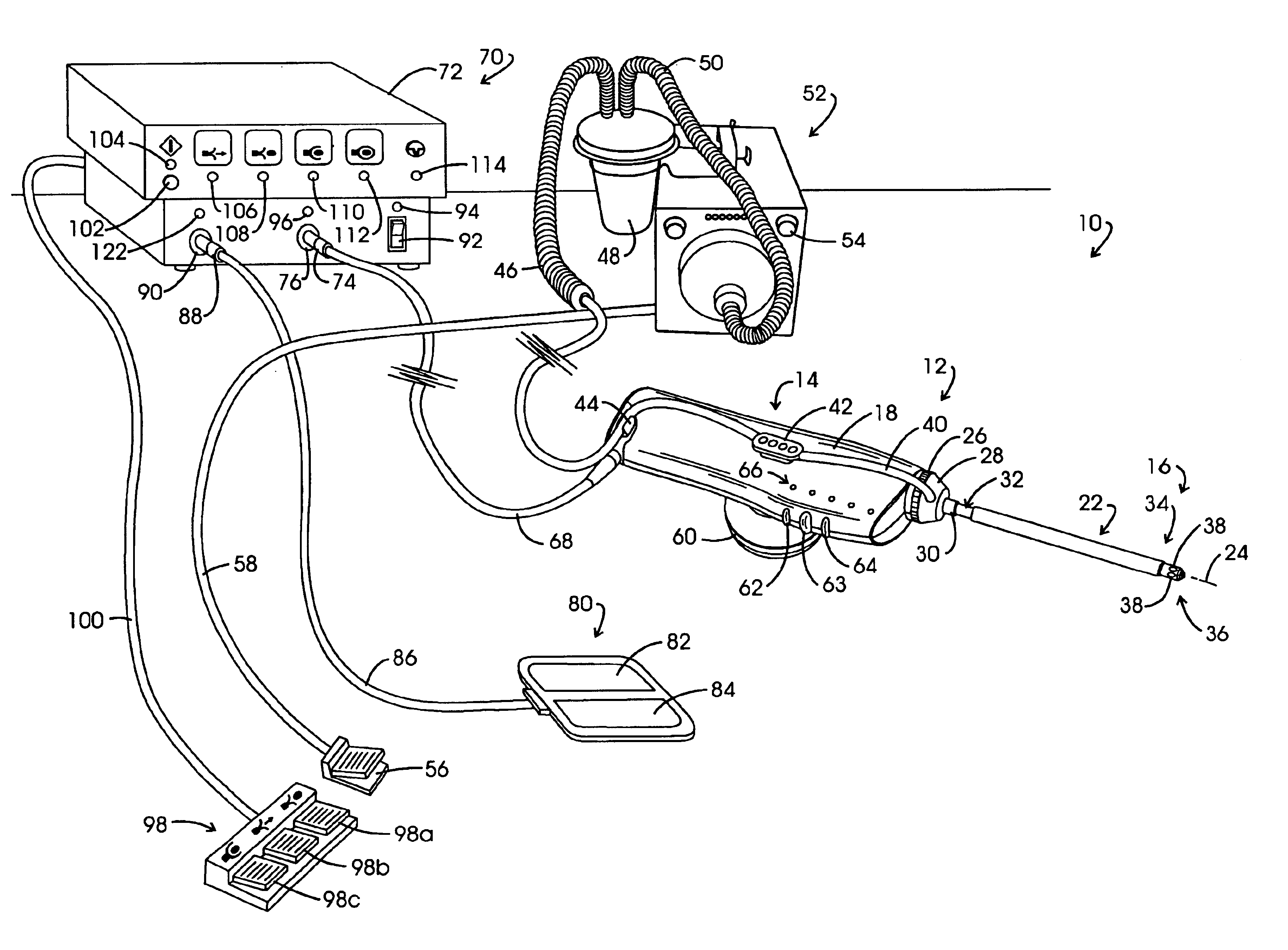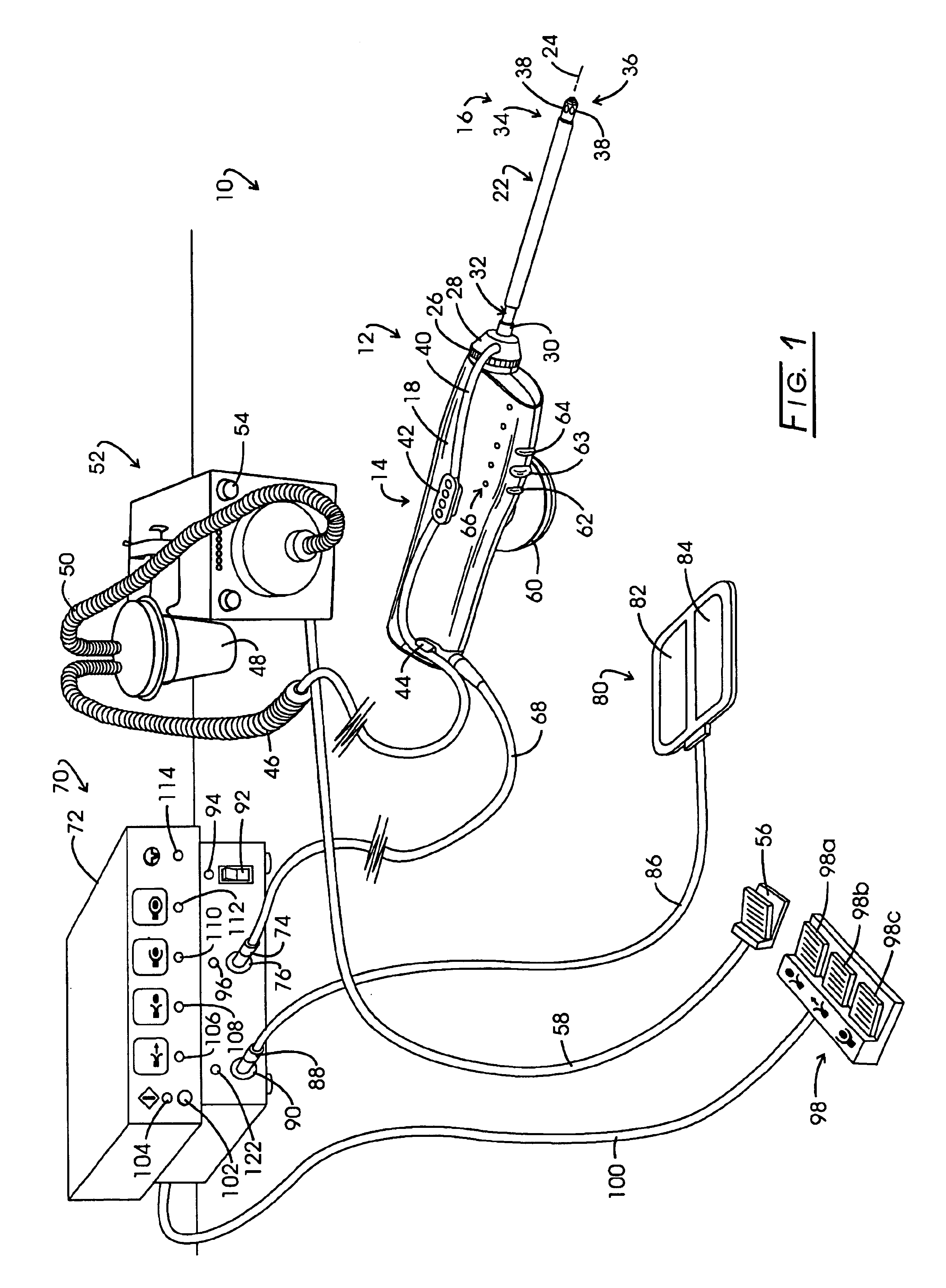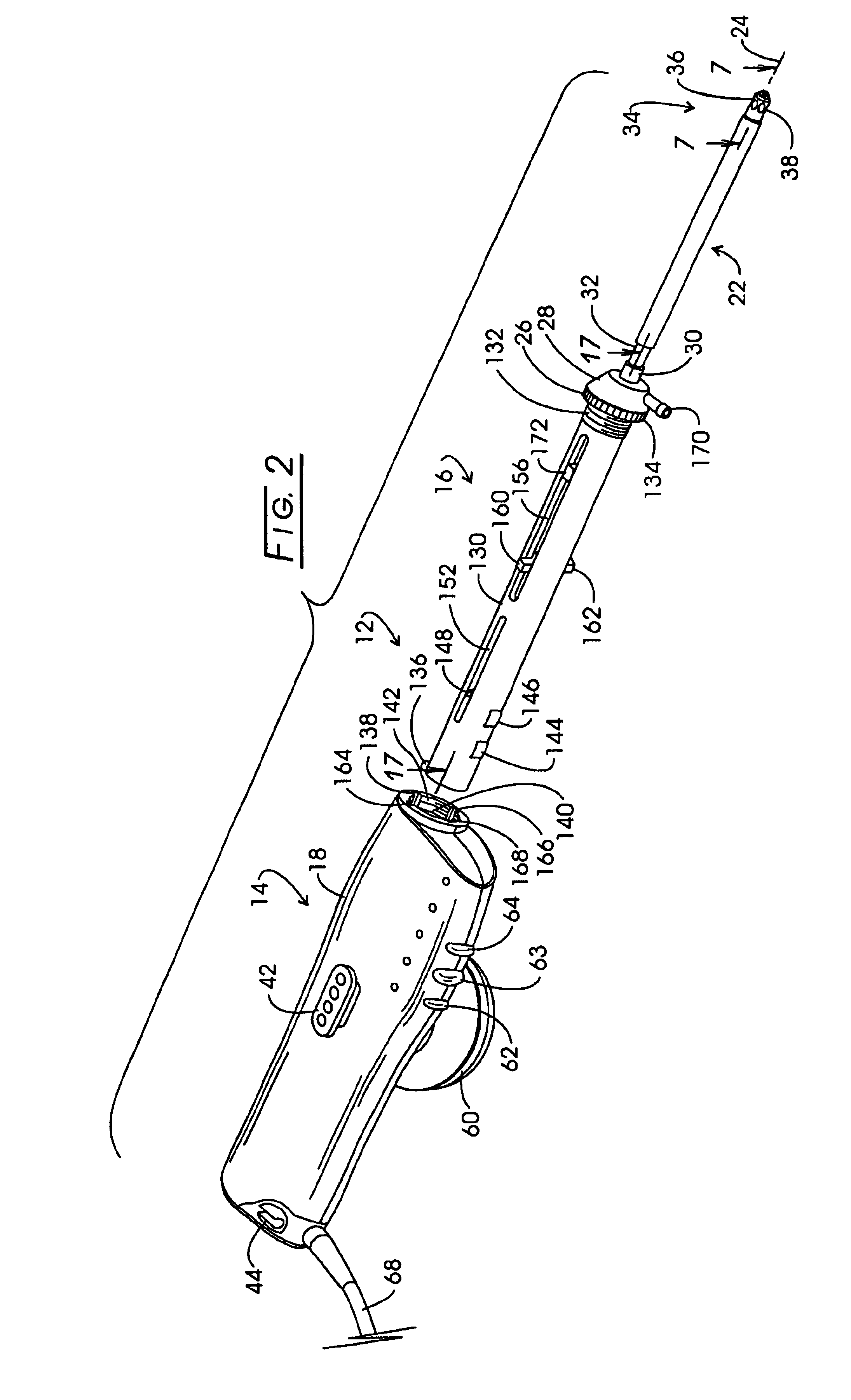Minimally invasive instrumentation for recovering tissue
a tissue and minimally invasive technology, applied in the field of minimally invasive instruments for recovering tissue, can solve the problems of insufficient specimen material for diagnosis, risk of false negative, and inability to allow a more advanced pathological investigation, so as to improve structure integrity and minimize length
- Summary
- Abstract
- Description
- Claims
- Application Information
AI Technical Summary
Benefits of technology
Problems solved by technology
Method used
Image
Examples
case b
[0144 calculations were based upon all three of the above factors and predicts a value that is 5.7% higher than actual.
[0145]The Case C calculations were based upon the utilization of a type 304 stainless steel with the noted 6.94 mil cable diameter and resulted in a computation of a minimum load at which cable breaks for room temperature is being 10.03 pounds and a minimum load at which cable breaks at electrosurgical arc temperatures of 1.37 pounds.
[0146]The fourth level of Table 3 sets forth data obtained with actual cable having a strand diameter of 1.388 mils and an overall cable diameter of 6.94 mils. Formed of a type 316 stainless steel, the minimum load at which cable breaks at room temperature was found to be 10.34 pounds and the minimum load at which cable breaks for the high temperature case where RF power is applied is 2.80 pounds a highly desirable value. The approximately 7 mil overall cable diameter was found to be acceptable for necessary mechanical deployment charac...
PUM
 Login to View More
Login to View More Abstract
Description
Claims
Application Information
 Login to View More
Login to View More - R&D
- Intellectual Property
- Life Sciences
- Materials
- Tech Scout
- Unparalleled Data Quality
- Higher Quality Content
- 60% Fewer Hallucinations
Browse by: Latest US Patents, China's latest patents, Technical Efficacy Thesaurus, Application Domain, Technology Topic, Popular Technical Reports.
© 2025 PatSnap. All rights reserved.Legal|Privacy policy|Modern Slavery Act Transparency Statement|Sitemap|About US| Contact US: help@patsnap.com



